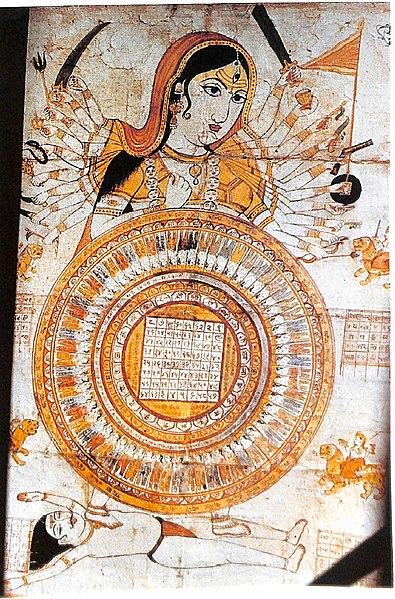The Yogini temples of India are 9th to 12th century roofless hypaethral shrines to the yoginis, female masters of yoga in Hindu tantra, broadly equated with goddesses especially Parvati, incarnating the sacred feminine force. They remained largely unknown and unstudied by scholars until late in the 20th century. Several of the shrines have niches for 64 yoginis, so are called Chausath Yogini Temples ; others have 42 or 81 niches, implying different sets of goddesses, though they too are often called Chausath yogini temples. Even when there are 64 yoginis, these are not always the same.
The Yogini temple at Mitaoli, on a rocky hilltop, open to the sky
A kapala, a cup carved from a human skull, used in tantra, including by yoginis
Chausathi Yogini Temple, Hirapur, Odisha, 2012. The yoginis have recently been venerated with a gift of headscarves.
One of the Hirapur yoginis, with an offering of flowers at her feet
A yogini is a female master practitioner of tantra and yoga, as well as a formal term of respect for female Hindu or Buddhist spiritual teachers in the Indian subcontinent, Southeast Asia and Greater Tibet. The term is the feminine Sanskrit word of the masculine yogi, while the term "yogin" IPA: [ˈjoːɡɪn] is used in neutral, masculine or feminine sense.
Yogini, 10th century Chola dynasty, Tamil Nadu, India. From the Smithsonian Institution.
Devi Yogini, Tibet 9th century
Cloth painting of Devi with a superimposed Yogini Chakra, wheel of the 64 Yoginis. Rajasthan, 19th century.
Nath yoginis Rajasthan 17th century








